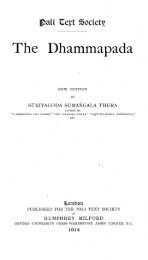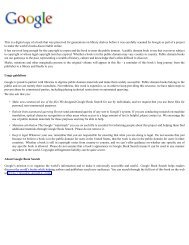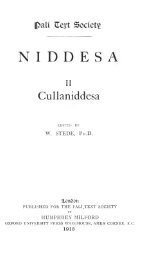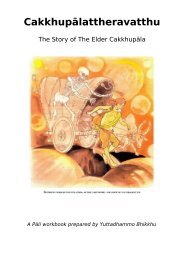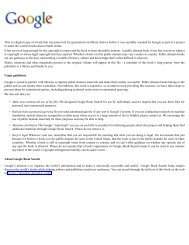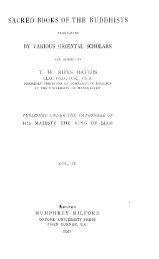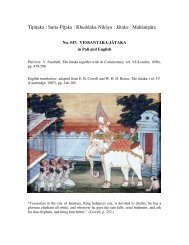Lessons In Practical Buddhism - Sirimangalo.Org
Lessons In Practical Buddhism - Sirimangalo.Org
Lessons In Practical Buddhism - Sirimangalo.Org
Create successful ePaper yourself
Turn your PDF publications into a flip-book with our unique Google optimized e-Paper software.
and effect works incessantly. This is how the cycle continues<br />
in brief – that our ignorance leads us to create mental<br />
formations like volition, partiality, judgment, addiction, etc.,<br />
then, because of mental formations, kamma-born<br />
consciousness arises which creates a new existence in line<br />
with those formations.<br />
These two sections comprise the first part of the teaching,<br />
which can be considered a summary of the entire teaching.<br />
The rest of the teaching serve to explain the process in<br />
greater detail: the second section details the arising of<br />
objective experience, the third explains how our defilements<br />
(starting with ignorance) lead us to subjectivity, and the<br />
fourth section describes the suffering that comes from<br />
subjectivity.<br />
Part Two: Objective Experience<br />
<strong>In</strong> looking at an entire lifetime, we must start with the first<br />
moment of conception, where new consciousness arises<br />
based on the last life. Throughout our whole life, it is<br />
consciousness that is most important. <strong>In</strong> the Buddha’s<br />
teaching, the mind is the most important factor in<br />
development and deterioration of a being. When we<br />
consider the above teaching on how ignorance leads to<br />
formations, this should be easy to understand. The ignorant<br />
mind is the cause of all of our problems, in this life and every<br />
life to come.<br />
How does the process work? The mind – consciousness –<br />
gives rise to our experience of reality. We experience the<br />
physical and mental reality around us according to our state<br />
of mind. So this conscious mind is said to give rise to the<br />
mental-physical reality we experience from one moment to<br />
the next. For instance, when we practice meditation, we<br />
experience the stomach, rising and falling. When we<br />
breathe, when the stomach rises, when the stomach falls,<br />
there is the physical and the mental aspects of the<br />
experience. The rising is physical and the knowing of the<br />
rising is mental. When we walk, there’s the foot moving,<br />
which is physical, and the mind knowing it, which is mental.<br />
When we feel pain, there’s the physical experience and<br />
there’s the mind that knows it and doesn’t like it and decides<br />
113



